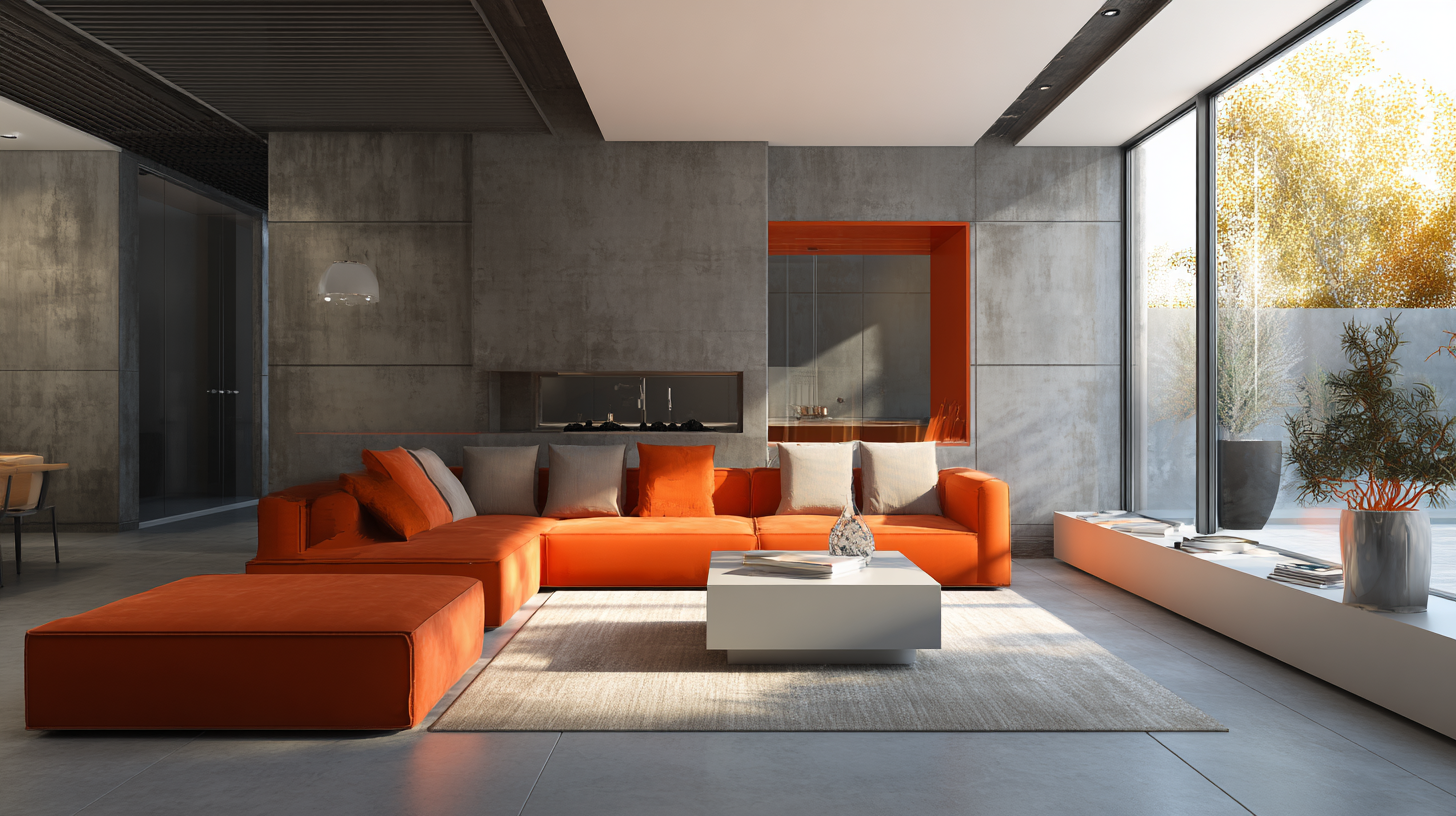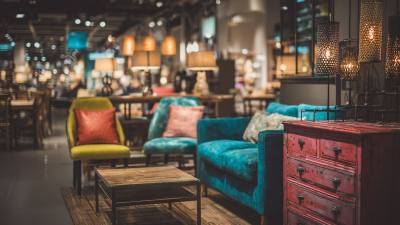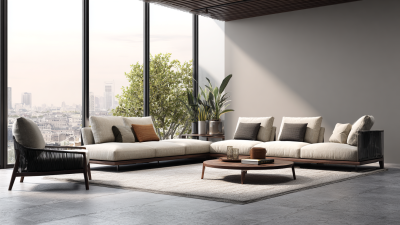Transform Your Space: How Interior Design Furniture Shapes Modern Living Environments
In today's rapidly evolving living environments, the significance of "interior design furniture" cannot be overstated. As the global interior design market is projected to reach $150 billion by 2025, according to a report by Grand View Research, the right furniture plays a pivotal role in shaping not only aesthetics but also functionality and comfort within our spaces. Modern living demands versatility and adaptability, factors that are increasingly prioritized by designers. For instance, a study by the American Society of Interior Designers reveals that 79% of homeowners prioritize the incorporation of multi-functional furniture solutions. This evolution highlights the blend of style and practicality, ensuring that interior design furniture is not merely decorative but a vital element that enhances the quality of daily living. As we explore transformative design tips, we will uncover how thoughtful furniture selection can elevate the ambiance and usability of our homes, ultimately influencing the way we experience and interact with our living spaces.

Identifying Key Elements of Modern Interior Design Furniture
Modern interior design furniture is pivotal in shaping contemporary living environments, as it not only enhances aesthetics but also maximizes functionality. According to a recent report by the International Furniture Fair, around 70% of homeowners prioritize versatile furniture that can adapt to smaller living spaces, reflecting the growing trend of urbanization. This demand drives designers to create multi-functional pieces, such as sofas that convert into beds and coffee tables with hidden storage, allowing residents to optimize their limited space.
Moreover, sustainability has emerged as a key element in modern interior design furniture. Research from the Furniture Industry Research Association indicates that 60% of consumers are willing to pay more for eco-friendly furniture made from sustainable materials. This shift is encouraging manufacturers to innovate, leading to a rise in the use of recycled and responsibly sourced materials in production.
Consequently, modern furniture design is not only about style but also about making conscious choices that reflect a commitment to environmental stewardship. As a result, consumers are increasingly drawn to designs that embody both function and sustainable practices, shaping a holistic approach to modern living environments.
Understanding the Impact of Color Schemes on Living Spaces
Color schemes play a pivotal role in shaping the ambiance and functionality of modern living spaces. The right combination of hues can evoke emotions, enhance mood, and influence behavior. For instance, soft pastels like light blue and mint green can create a calming environment, ideal for relaxation areas such as bedrooms or reading nooks. In contrast, vibrant colors like reds and yellows can energize spaces, making them suitable for active areas like kitchens or playrooms. By strategically selecting colors, interior designers can tailor environments to meet the needs of their occupants.
Moreover, the interplay of light and color can transform a room significantly. Natural light can alter the perception of color, making it essential for designers to consider how light interacts with paint, furniture, and decor. Darker shades can make a space feel cozy and intimate, while lighter tones can open up a room, making it appear larger and more inviting. Understanding these dynamics is crucial for creating harmonious spaces that not only look aesthetically pleasing but also foster well-being and productivity in daily life.
How to Choose Functional Pieces that Enhance Comfort and Style
When it comes to transforming your living environment, selecting the right furniture is crucial for achieving both comfort and style. Functional pieces are not merely decorative; they serve a purpose that enhances your daily life. Start by assessing your space and determining which areas require attention. For instance, a multi-functional coffee table can provide storage and serve as a focal point, while an ergonomic sofa ensures that relaxation doesn’t come at the cost of physical well-being.

Furthermore, consider the balance between aesthetics and practicality when choosing furniture. Incorporate elements that reflect your personal style—such as a statement armchair or colorful cushions—while ensuring that each piece complements the overall design of your space. Textures and colors should harmonize to create a cohesive atmosphere. By carefully selecting furniture that meets both your functional needs and aesthetic desires, you can enhance your living environment, making it more inviting and stylish.
Incorporating Sustainable Furniture for Eco-Friendly Living
In today's world, the importance of sustainable living has gained significant traction, making it critical to prioritize eco-friendly furniture in interior design. By choosing pieces made from sustainable materials such as reclaimed wood, bamboo, or recycled metals, individuals can significantly reduce their ecological footprint. Not only do these materials contribute to a healthier environment, but they also exhibit unique character and charm, often telling a story that enhances the overall aesthetic of modern living spaces.

Incorporating sustainable furniture goes beyond just material choices; it also includes selecting furniture that is designed to last. Investing in high-quality, timeless pieces reduces the need for frequent replacements, ultimately conserving resources and minimizing waste. Additionally, eco-friendly furniture often features versatile designs that can adapt to changing lifestyles, ensuring that each piece remains relevant and functional over time. Creating a living environment that reflects a commitment to sustainability not only fosters a sense of responsibility but also cultivates a space that is both stylish and thoughtfully curated.
Tips for Creating Open-Concept Spaces with Modular Furniture
In modern interior design, the shift towards open-concept spaces is transforming how we interact with our living environments. The move away from traditional segmented rooms allows for a more fluid and flexible layout, making spaces feel larger and more inviting. According to recent industry reports, open floor plans are increasingly favored for their ability to enhance natural light and create versatility in everyday living. Modular furniture plays a crucial role in this transformation, providing adaptability in design and functionality that meets the demands of contemporary lifestyles.
To effectively create open-concept spaces with modular furniture, consider these tips: first, prioritize multifunctional pieces that can serve different purposes, such as sofas that convert into beds or coffee tables with hidden storage. This approach not only optimizes space but also adds to the aesthetic by minimizing clutter. Second, utilize room dividers creatively to delineate areas while maintaining an open feel. Choose stylish options like decorative screens or plants that act as both dividers and decor, fostering a sense of intimacy in shared spaces without closing them off.
As we look towards 2025, the embrace of modular configurations is set to elevate living areas further, with trends highlighting designs that blend functionality with style. Modular sofas, in particular, are becoming essential, allowing homeowners to easily reorganize their layouts to accommodate different needs, from hosting gatherings to everyday relaxation. This adaptability is crucial in a world where our living spaces are becoming more dynamic and personal.
Transform Your Space: How Interior Design Furniture Shapes Modern Living Environments
| Dimension | Description | Benefits |
|---|---|---|
| Modular Seating | Flexible seating solutions that adapt to various layouts. | Promotes collaboration and accommodates social gatherings. |
| Multi-Functional Tables | Tables that can be used for dining, working, or leisure activities. | Maximizes space efficiency and versatility in use. |
| Open Shelving | Shelving that creates a sense of openness and is easily accessible. | Encourages organized display and easy access to items. |
| Lounge Chairs | Comfortable seating options that enhance relaxation. | Adds a cozy atmosphere to open spaces. |
| Accent Rugs | Rugs that define areas within an open-concept layout. | Helps to delineate space and add warmth. |
Related Posts
-

How to Choose Best Interior Design Furniture with Exceptional After Sales Support and Low Maintenance Costs
-

Future Trends in Best House Furniture Market Analysis for 2025 Global Buyers
-

How to Choose the Perfect Interiors Furniture for Your Home Design Needs
-

Future Trends in Global Sourcing: How to Choose the Best Modern Apartment Furniture by 2025
-

Innovative Designs Shaping the Future of Best Modern Contemporary Furniture
-

Solutions for Sourcing Unique Boutique Furniture: A Global Buyer’s Guide

